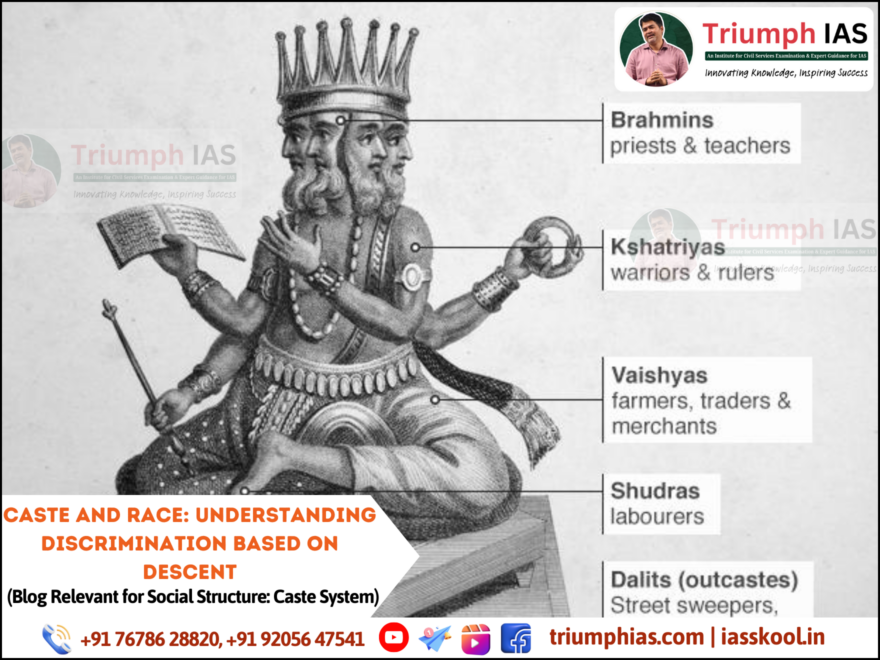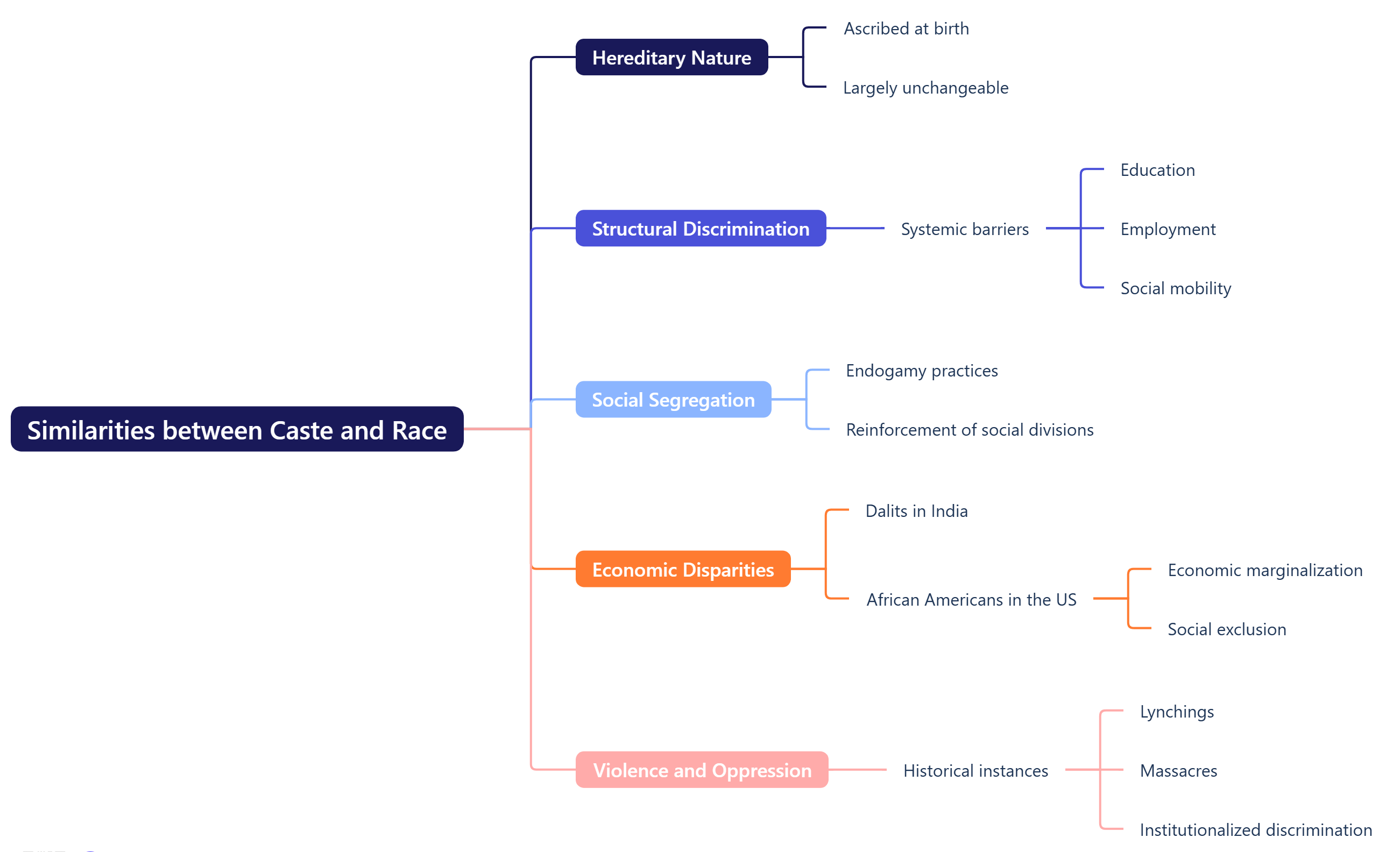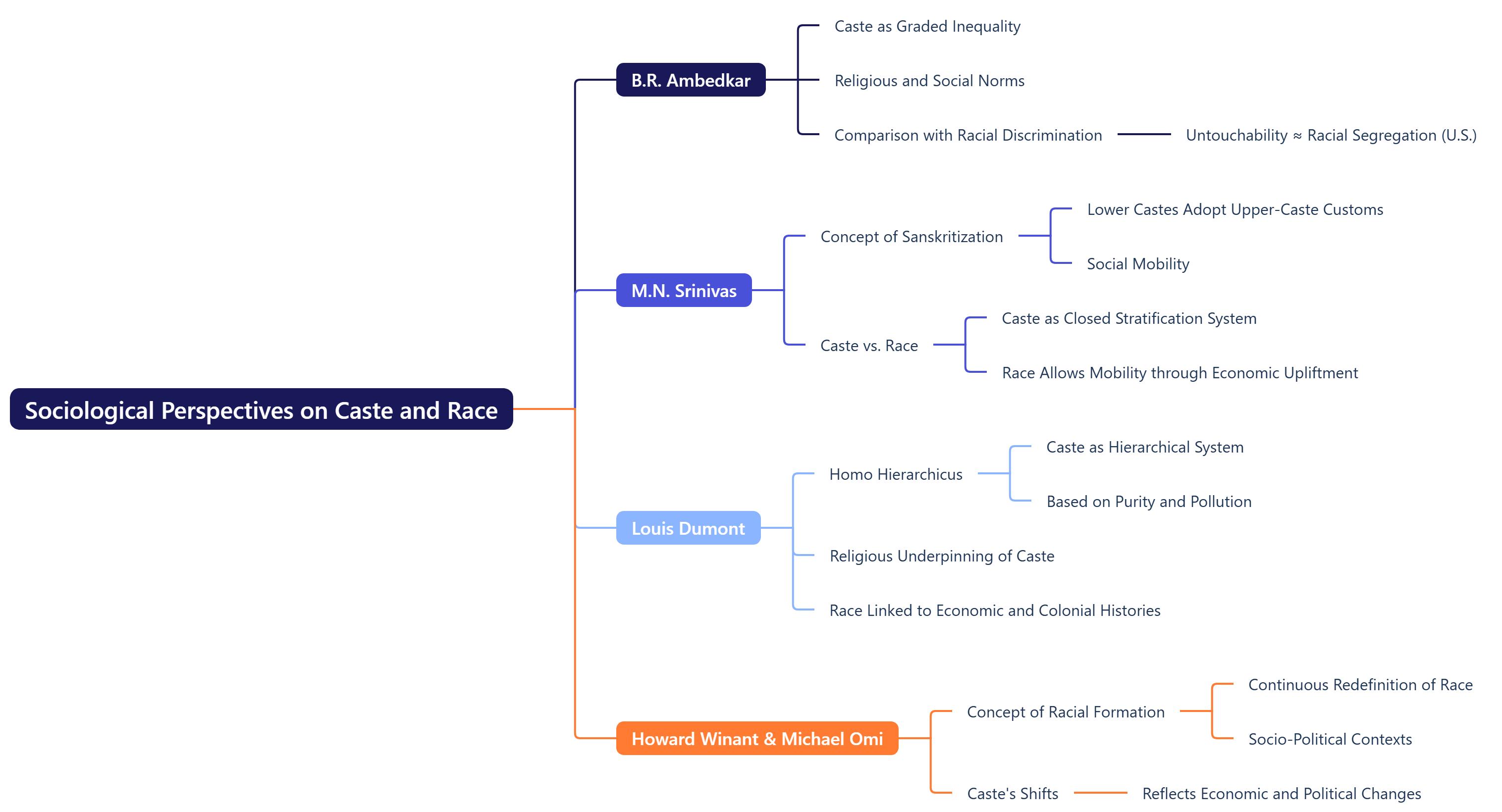Caste and Race: Understanding Discrimination Based on Descent
(Relevant for Social Structure: Caste System)
|
Caste-based discrimination remains one of the most pressing socio-political issues in India, drawing parallels with racial discrimination globally. The 2001 United Nations World Conference against Racism, Racial Discrimination, Xenophobia, and Related Intolerance in Durban was a pivotal moment in bringing caste-based discrimination to the international stage. Dalit activists advocated for caste to be treated as race due to its systemic nature and historical roots. However, the Government of India resisted this classification, arguing that caste is a social construct, while race is biological. This article explores the ongoing debate and its implications for Indian society. Discrimination based on descent is a deeply entrenched social issue that manifests in various forms across the world. While caste and race are distinct concepts, their intersection in the realm of discrimination has been a subject of sociological debate. Both systems have been used to maintain social hierarchies and justify exclusion, often leading to severe socio-economic consequences. Caste and Race: Are They the Same?Understanding Caste and RaceThe debate on whether caste is equivalent to race has been longstanding. Sociologists and activists highlight how both systems are based on hereditary status, social stratification, and systematic exclusion. The Dalit community has often drawn comparisons between casteism in India and apartheid in South Africa, emphasizing segregation, violence, and economic exclusion. The legal framework also provides some backing to this argument. Judicial interpretations in India have acknowledged caste as a form of descent-based discrimination. The Supreme Court of India, in K.C. Vasant Kumar vs. State of Karnataka (1985), recognized caste as a race-based classification for the purpose of affirmative action. Similarities between Caste and Race
Government of India’s Response to the Durban Conference
At the 2001 Durban Conference, Dalit organizations sought international recognition of caste discrimination as equivalent to racial discrimination. However, the Government of India opposed this stance, asserting that caste is an internal matter and should not be equated with race. The Indian delegation argued that caste discrimination is distinct from racial discrimination because it lacks a biological basis and is instead rooted in social and cultural traditions. Sociological Perspectives on Caste and Race
Caste-Based Violence and Gendered DiscriminationCaste-based atrocities remain a significant issue in India, disproportionately affecting Dalit women. The Hathras gang-rape case in Uttar Pradesh in 2020 is a stark reminder of the brutal violence faced by Dalit women. Reports indicate that caste-based sexual violence is often underreported due to social stigma and a lack of effective legal recourse. The National Crime Records Bureau (NCRB) has documented a rise in crimes against Scheduled Castes, highlighting the systemic nature of caste-based oppression. The lack of timely action by law enforcement agencies in cases involving Dalit victims further worsens the problem. Caste and Global ParallelsWhile caste is often viewed as a uniquely Indian phenomenon, similar hierarchical structures exist in other parts of the world. The Burakumin in Japan, the Osu in Nigeria, and caste-like discrimination in Nepal and Pakistan reflect the pervasiveness of descent-based exclusion beyond India. These parallels reinforce the argument that caste discrimination shares fundamental characteristics with racial discrimination. Legal and Policy InterventionsIndia has enacted several legislative measures to address caste-based discrimination, including:
However, despite these legal protections, enforcement remains a challenge. Structural biases within the legal and administrative systems often deny Dalits justice, reinforcing cycles of discrimination and exclusion. ConclusionThe debate on whether caste is race continues to be contentious. While caste is often framed as a social construct, its implications mirror those of racial discrimination. The push for international recognition of caste as a human rights issue has gained momentum, but domestic resistance persists. To combat caste discrimination effectively, India must strengthen legal enforcement, promote social inclusion, and acknowledge the systemic nature of caste-based oppression. While caste and race have distinct historical and cultural origins; they both function as mechanisms of social stratification and discrimination. By understanding their similarities and differences, societies can develop more effective policies to address systemic inequalities and promote social justice. |





One comment